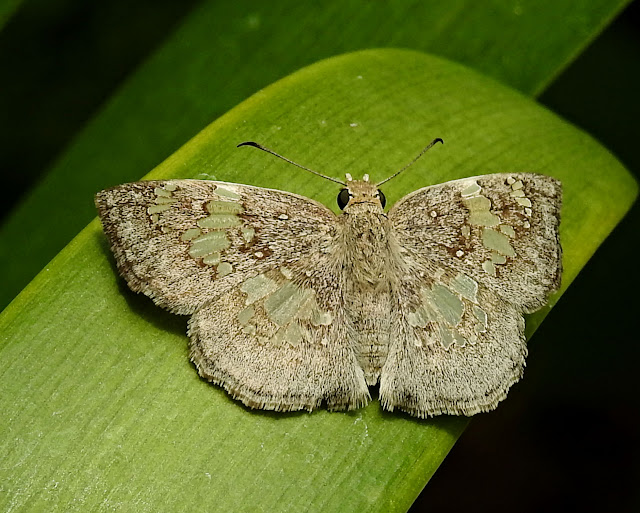The Pyrginae is a cosmopolitan subfamily, its members being found in temperate and tropical habitats throughout the world. The 990 neotropical species include 581 which are placed in the tribe Pyrgini, which includes such well known genera as Urbanus, Astraptes, Bolla, Pyrgus, Erynnis, Sostrata, and Mylon.
The genus Xenophanes contains a single species tryxus. It is instantly recognizable, with a pale brown ground color heavily speckled with grayish; and large hyaline windows in the fore and hind wings.
Xenophanes tryxus is found throughout much of central and South America from Mexico to Bolivia and Argentina.
This is a species of open disturbed evergreen and deciduous habitats including pastures, farmland, riverbanks, and roadsides at altitudes between sea level and about 1500m.
The adults are normally encountered singly or in two’s and three’s. They bask on bushes and low herbage with wings fully outspread but rarely spend more than a few seconds in one place. In hot weather they escape the desiccating effects of the sun by sheltering under the leaves of trees and bushes. Both sexes visit flowers, and males also imbibe mineralized moisture from rock faces, pebbles, sandbanks, and the surface of unmetalled roads.









%2020.jpg)




%2020.jpg)
%2021.jpg)
%2022.jpg)






%2025.jpg)


%20(Quiscalus%20major)%2020.jpg)
%20(Quiscalus%20major)%2021.jpg)



%2020.jpg)
%2021.jpg)
%2020.jpg)
%2021.jpg)



%2020.jpg)
%2022.jpg)
%2020.jpg)
%20(Turdus%20merula)%2020.jpg)
%20(Turdus%20merula)%2021.jpg)